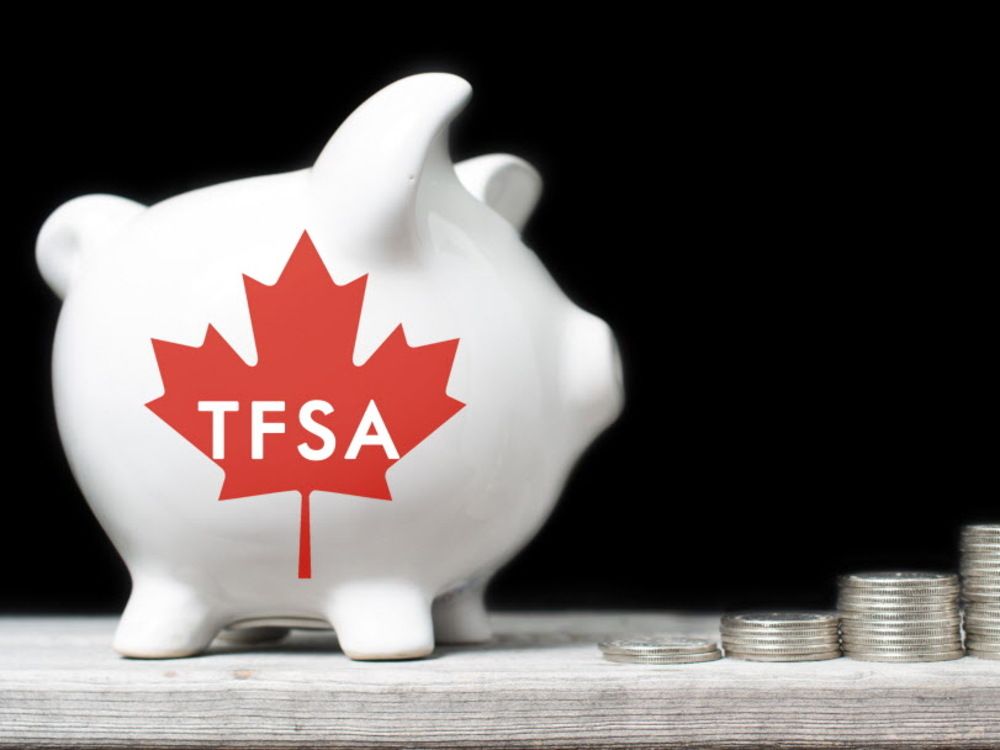If you’re serious about turning content into a pipeline, an eBook is one of the most effective marketing tools.
Unlike a blog post that disappears in the feed or a social update with a 24-hour shelf life, an eBook positions your brand as an authority, generates leads, and creates evergreen value you can repurpose.
What used to require a publisher and months of prep is now fast, affordable, and fully in your control. With modern document creation software like Google Docs, Scrivener, or Adobe InDesign, you can plan, design, and ship a professional-grade eBook in days. Pair it with the right distribution strategy, and your content becomes a scalable marketing asset — one that attracts prospects, nurtures them through the funnel, and drives measurable revenue.
If building an eCommerce strategy for your eBooks is on your 2025 roadmap, this is the place to start.
What is an eBook?
An eBook is a digital version of a book that can be read on electronic devices such as eReaders, tablets, smartphones, or computers. eBooks often include interactive features, adjustable fonts, and built-in dictionaries. Common formats include EPUB, PDF, and MOBI.
If you look eBook up in the dictionary, you’d find the following:
Noun: A book composed in or converted to digital format for display on a computer screen or handheld device.
Pretty straightforward. An electronic book; an eBook.
TL;DR: Everything you need to know about eBooks
- What is an eBook? It’s a non-editable, reflowable digital file (like EPUB, AZW, or PDF) that can be read on phones, tablets, eReaders, and computers.
- How does an eBook work across devices? Formats like EPUB adjust to screen sizes, while PDFs preserve fixed layouts.
- Which eBook format should you use? EPUB for compatibility, AZW for Kindle publishing, and PDF for marketing or B2B assets.
- Why are eBooks valuable in 2025? They’re portable, eco-friendly, cost-effective, and instantly accessible, great for both readers and businesses.
- How do you create an eBook from scratch? This guide walks through planning, writing, designing, formatting, and converting your content step-by-step.
- What’s the best way to publish and sell an eBook? Use Amazon KDP for reach, or sell direct via your website using EPUB or PDF formats.
- How do you promote an eBook effectively? Leverage email campaigns, landing pages, social media, and influencer partnerships to maximize downloads and engagement.
To have a better understanding of what an eBook really is, let’s take a look at the characteristics of an eBook.
What are the characteristics of an eBook?
For starters, eBooks are files that you can read on a digital device — a tablet, smartphone, computer, etc. But again, considering other files can be read on digital devices (e.g., Word documents), eBooks have specific characteristics that differentiate them.
eBooks shouldn’t be editable
One distinct characteristic of an eBook: the text should not be editable. An eBook should always be converted into a format that ensures it’s uneditable. With thousands of people having access to it on digital devices, people could potentially change any content without the author’s permission. So, in order to qualify as an actual eBook, text should not be able to be changed in any way, just like a paperback book.
eBooks are reflowable (with an exception)
Another important characteristic is that true eBooks should be reflowable. This means that no matter what the size of the screen you’re viewing the eBook on, it will always fit your screen; text will remain formatted with line breaks and chapters and images will resize to fit the proportions of the device you’re reading on.
There is one exception though: PDFs. Considering PDFs can’t be edited, but they aren’t reflowable, they technically don’t qualify as eBooks according to the characteristics that differentiate eBooks. But with businesses taking advantage of the ease of PDF downloads and distribution, PDFs have become “unofficial” eBooks and are still widely used eBook formats.
What are the most common eBook formats?
If you were to search for eBook formats, you would come across quite a few options. Dozens actually. However, the likelihood of actually using many of these formats is pretty slim. To keep it simple for you, we are going to just take a look at the three that are known for their ease of use and ability to be used in a format that is widely distributed: EBUP, AZW, and PDF.
EPUB (.epub)
An EPUB, or electronic publication, is the most widely supported format and can be read on a variety of devices, including computers, smartphones, tablets, and most eReaders (except Kindles). EPUB files are reflowable, which make them true eBooks and easier to read on small devices.
AZW (.azw)
AZW files were developed by Amazon for its Kindle eReaders. These files can store complex content like bookmarks, annotations, and highlights. But use of AZW files are limited to Kindles or devices with Kindle apps. Additively, they can only be accessed from the Amazon online bookstore.
PDF (.pdf)
A PDF, also known as a portable document format, isn’t technically a true eBook according to our definition, but it’s the format most people are familiar with. Created by Adobe, PDFss are known for their ease of use and ability to hold custom layouts. Because they hold their format and aren’t reflowable, they can be difficult to read on a small screen. Despite this, they are still one of the most commonly used eBook formats, especially by marketers.
Build polished content faster with the right tools
Whether it’s drafting an internal report, designing an eBook, or collaborating on sales collateral, document creation software keeps teams productive and consistent. The best tools streamline writing, formatting, and design so your content looks professional across every channel.
On G2, professionals share reviews of document creation software that help businesses create, edit, and manage documents efficiently, from quick drafts to publish-ready assets.
EPUB vs. AZW vs. PDF: Which eBook format should you choose?
Choosing the right format affects how easily your eBook can be read, shared, and sold. Here’s how the top three compare:
| Feature | EPUB | AZW (Kindle) | |
| Reflowable | ✅ Yes | ✅ Yes | ❌ No |
| Editable | ❌ No | ❌ No | ❌ (if exported properly) |
| Device compatibility | Most devices and apps | Kindle + Kindle app only | Any device with a reader |
| Ideal for | Universal sharing | Selling on Amazon | Business and marketing content |
| Layout flexibility | Medium (reflow-first) | Medium | High (locked layout) |
| Interactivity | ✅ Supports links/media | ✅ Supports Kindle features | ⚠️ Limited |
Want wide distribution? Use EPUB. Publishing on Amazon? Go with AZW. Designing a lead magnet or B2B download? PDF wins.
Why should marketers create an eBook?
If you’re considering making an eBook, it’s most likely for one of two reasons:
- Self-publication purposes
- As part of your marketing strategy
Whatever the case may be, let’s look at why you should move forward with making an eBook.
Self-publication
Whether it’s a research paper or simply a book you’ve been working on, self-publishing an eBook is a great idea for anyone looking to share their ideas with the world. Not sure how to publish an eBook? Don’t let that stand in your way; it’s pretty easy and worth the effort. Given the fact that eBooks are shareable and easily accessible to readers, new writers can expand their audience by sharing their eBooks online.
They’re also a great way to gain confidence in your specific subject matter and improve your writing skills. Creating an eBook to educate readers allows you to expand your knowledge on the topic, establish your expertise, and develop your writing and editing skills along the way.
Marketing strategy
eBooks are becoming increasingly popular as part of marketing strategies. This is because content is the backbone of inbound marketing, and the quality of that content can make or break an inbound marketing strategy. When it comes to mastering your strategy, understanding what type of content works best in each stage will help you successfully plan your inbound marketing strategy.
eBooks are particularly great assets in the attract stage of the inbound marketing strategy. They create brand marketing awareness and offer value to visitors (potential customers) by giving them something that is useful to them. If you manage to do it right, you can turn those visitors into leads by gathering their contact details and moving them to the convert stage.
As a marketer, writing an eBook is a great opportunity to be the one-stop shop that readers want. With informative, valuable content, you’ll attract strangers to your website and provide your company with potential leads. How do these visitors become leads, you ask? If you gather their contact information, such as their email addresses. A great example of how effective eBooks can be in your marketing efforts.
eBook market trends and stats (2025)
The digital publishing world isn’t slowing down. In fact:
- The revenue in the eBooks market globally is projected to reach US $14.92 billion in 2025.
- From 2025 to 2030, the eBook market revenue is projected to grow at a compound annual rate of 1.24%, reaching an estimated $15.87 billion by 2030.
- On average, each user is expected to generate around $13.97 in revenue.
- Overall, the eBook industry continues to gain momentum as consumers increasingly turn to digital, portable, and environmentally conscious reading options over traditional print formats.
What are the benefits of eBooks?
With eBooks introduced to the world of reading, have you ever wondered what could possibly make them better than traditional paperback books? I have, and here are just a few of the benefits of eBooks:
eBooks save space
Some people are fortunate enough to have big libraries to store their books. But for the bookworms who don’t have that extra room, eBooks save a tremendous amount of space by allowing readers to store thousands of books on one device. No more searching for space to store your new books.
eBooks save money
I know this one caught your eye, because who doesn’t want to save money? With no manufacturing or shipping costs, eBooks are cheaper than paperback books. The average price of an eBook rings in at less than $5, whereas paperback books are generally more than $10. Might not seem like much, but it adds up if you’re an avid reader.
eBooks save the environment
Quite possibly my favorite benefit of eBooks. The book-printing industry consumes 16 million tons of paper each year; that’s 32 million trees. And don’t get me started on the amount of pollution that factories release into the air. Talk about an enormous carbon footprint.
With eBooks making up around 30 percent of book sales, they not only save energy and reduce pollution, but they also save approximately 9.6 million of those 32 million trees annually! This is a win for everyone.
eBooks are portable and convenient
Anything that makes life easier for people is attractive, and convenience is a real crowd pleaser. eBooks are portable AND convenient. With a supported eBook device, you can have a library at your fingertips. Carrying around your favorite books on your iPad, eReader, smartphone, or tablet (all lightweight devices!) sounds a lot easier than lugging around a thousand paperback books if you ask me.
Instantly download eBooks
Nowadays, when people want something, they want it now. You can buy an eBook from virtually anywhere on any eBook-supported device with the touch of a button and download it instantly. No more driving to the store and wandering around for hours, shuffling through the dozens of bookshelves, or waiting for your order to arrive. You can easily access eBooks anytime and anywhere, and start reading right away.
You can change the font size of an eBook
Depending on the format (excludes PDF), you can change the font size of an eBook. This is especially appealing to those who have a hard time seeing. No more squinting or reaching for your glasses. It’s nice and easy to customize your font size with an eBook.
Although you can’t change the font size of a PDF eBook, you still can zoom in on your device. Not as convenient, but still something you can’t do with a paperback book.
eBooks are searchable
Unlike paperback books, eBooks are easily searchable. Instead of flipping through the pages trying to find a favorite quote or part of the story, you can go back by searching keywords to find the section of your book you were looking for. This is especially helpful when you’re reading long books that would take hours to flip through looking for a specific page.
How do you create an eBook? Step-by-step guide
It can be overwhelming learning how to make an eBook, but they’re actually fairly easy to put together and promote with a little guidance.
1. Define your audience and goal
The process begins with defining your objectives and audience.
Ask: “Who is this for?” and “What do I want it to do?”
Is this a lead magnet? A thought leadership piece? A monetized product?
Knowing these things will then allow you to choose a topic that will not only interest your audience, but also fulfill the reason you’re writing the eBook in the first place.
2. Choose your topic and title
Use long-tail keywords that reflect reader intent.
Example: “How to Build a Lead-Gen Funnel With eBooks”
Once you’ve chosen a topic, choose a specific title to pull in your readers. It should also give them a reason to want to read your eBook; a vague title won’t get you very far.
3. Build your outline
From there, begin outlining your eBook by planning an effective introduction, breaking it into chapters, and placing appropriate calls to action throughout. Creating this outline will save you time once you start writing.
Break the book into:
- A hooky intro
- 3–6 core chapters
- Calls-to-action (CTAs)
- Final summary or checklist
Writing your eBook should be fun. This is your chance to show readers that you’re an expert on the subject you’re writing about. Include details, be creative, and show them what you’re made of. Be sure to proofread once you’re done!
4. Write with clarity and voice
Keep it conversational but authoritative. Use examples. Anticipate reader questions.
5. Design it well
Next comes the design. From color to visuals to branding and font, the design of your eBook should complement the content it will include. Your title should pull the reader in, but the design should help with that too. As you have noticed, creating marketing content requires multiple steps and teams coming together to create a new piece of content. Some companies use a content marketing platform to communicate efficiently between projects.
Use Canva, InDesign, etc. to style your eBook. Focus on:
- Readable fonts
- Strong contrast
- Whitespace + visuals
To make your eBook appear easy to read, consider the formatting too; break up large blocks of text with lists and visuals.
6. Convert your file
Finally, you’ll want to convert, publish, and promote your eBook! You’ve put a lot of thought into it, as well as invested a lot of time in it. So promoting it is an important step. You want to make sure your eBook is seen and read. Creating a landing page, using social media marketing, and incorporating your eBook in your blog strategy are all simple, yet effective, ways to start promoting your eBook right away.
Where can you sell your eBook online?
Now that you’ve made an eBook, it’s time to sell it. One of the easiest ways to distribute your eBook is to sell it directly from your website. You can easily sell PDFs and EBUBs on your site, but be sure to give visitors instructions on how to download your eBook.
Another great place to start: Amazon. In 2017, Amazon led eBook sales in the indie self-published, small/medium publishers, and big five published categories. So if you’re looking to reach the largest market, get your eBook on Amazon.
Some other retailers dominating eBook sales include Apple, Kobo, and Nook.
If you get your eBook on these sites, you’ll be selling them like crazy in no time.
How can you promote and distribute an eBook effectively?
From a marketing standpoint, you’ll want to spend a lot of time promoting and distributing your eBook in a variety of ways. Because you’re looking to reach a wide audience with your eBook, you’ll want to not only promote the eBook on your website’s homepage, but also plan to distribute it through other outlets as well.
A few simple ways to start promoting your eBook right away are:
- Including your eBook in nurture or email drip campaigns
- Scheduling regular social media posts with quotes and links to your eBook
- Using influencer marketing to promote your eBook
- Writing email and phone scripts about your eBook for cold outreach
The list goes on and on, but when it comes down to it, the more exposure you can get for your eBook, the more readers you’ll attract. Consider the examples above to get you started, but don’t be afraid to spend some time brainstorming creative distribution and promotional tactics, either.
Promotion and distribution tactics
Once your eBook is finished, your job’s only half done. Now it’s time to get it in front of the right people.
Email campaigns
- Use a drip sequence to nurture leads with chapters or highlights
- Add download links to onboarding emails and newsletters
- Segment based on interests and behavior
Landing pages
Create a standalone lead-gen page with:
- A compelling headline
- Sneak peek or excerpt
- Social proof
- Lead form or instant download
Social and influencers
- Run promo posts across LinkedIn, Instagram, and Twitter/X
- Partner with niche influencers or micro-creators to spread the word
Cold outreach
Use the eBook as a conversation starter:
“Hey [Name], I put together a guide on [Topic] — mind if I send it your way?”
Tip: Track downloads and CTAs with UTM parameters and conversion events.
What devices are best for reading eBooks?
You can read an eBook on practically any digital device. But not all reading experiences are created equal.
General devices:
- Smartphones & Tablets: Good for casual reading; not always great on the eyes.
- Laptops & Desktops: Ideal for PDFs or research-heavy content.
- Apps: Kindle, Apple Books, and Google Play Books support most formats.
In recent years, though, an electronic reader (eReader) was developed specifically for reading and storing eBooks. An eReader is simply a handheld device on which eBooks can be read.
Some of the most popular eReader devices include:
- Amazon’s Kindle
- Rakuten’s Kobo
- Barnes & Noble’s Nook
Some of these devices were made with built-in lighting so that readers can continue to read once they no longer have access to light.
eReaders like the Kindle, Kobo, and Nook were made for bookworms. Here’s why they’re still popular:
- Battery life that lasts weeks
- No screen glare in sunlight
- Thousands of books stored on one device
- Distraction-free reading (no emails or notifications)
You can start reading on your Kindle at the beach and pick up right where you left off on your phone later. Pretty seamless.
Frequently asked questions (FAQs) about eBooks
Have more questions? Find the answers here.
Q1. How do EPUB, AZW, and PDF differ?
The main difference between EPUB, AZW, and PDF is format compatibility and features. EPUB is an open, reflowable format supported by most eReaders. AZW is Amazon’s proprietary Kindle format with DRM options. PDF preserves fixed layouts and is best for documents requiring exact formatting.
Q2. What devices support reading eBooks?
Devices that support reading eBooks include dedicated eReaders like Amazon Kindle and Kobo, tablets such as iPad and Samsung Galaxy Tab, smartphones running iOS or Android, and computers with eBook software. Many smart TVs and smart displays also offer basic eBook reading apps.
Q3. Why should I create an eBook for marketing or publishing?
Create an eBook for marketing or publishing to reach a global audience, establish authority, and generate leads. eBooks are cost-effective to produce, easily distributed online, and offer long-term visibility. They can also be repurposed into blog posts, infographics, or videos for extended content value.
Q4. Where and how can I sell or distribute an eBook?
Sell or distribute an eBook through online marketplaces like Amazon Kindle Direct Publishing, Apple Books, and Kobo Writing Life, or via your own website using eCommerce tools. You can also distribute through email marketing, social media promotions, and content partnerships to reach targeted audiences.
Q5. What formats do eBooks come in?
eBooks come in formats such as EPUB, MOBI, AZW, and PDF. EPUB is widely supported and reflowable, MOBI and AZW are used primarily on Amazon Kindle devices, and PDF preserves fixed layouts, making it ideal for graphic-rich or design-specific publications.
Q6. How is an eBook different from a PDF?
The main difference between an eBook and a PDF is layout flexibility. eBooks, in formats like EPUB or MOBI, are reflowable and adapt to screen size, making them ideal for various devices. PDFs maintain a fixed layout, preserving exact formatting but limiting readability on smaller screens.
Q7. What are the benefits of eBooks?
The benefits of eBooks include instant delivery, portability, and adjustable reading features. eBooks can be downloaded worldwide, stored in large quantities on a single device, and offer options like font resizing, search functions, and built-in dictionaries for enhanced reading convenience.
Bookmark this moment
Well, what do you think? Do you feel like you know everything you need to know about eBooks? I hope so!
We’ve covered what makes an eBook an eBook, eBook formats, popular eBook devices, benefits of an eBook, why and how to make an eBook, and how to purchase, sell, and distribute an eBook.
If you’re interested in learning more about eBooks, be sure to check back for new updates and new articles.
Ready to create designs that look as good on screen as they do in print? Explore the best desktop publishing software and start your next project today.
This article was initially published in 2018. The content has been updated with new information.









